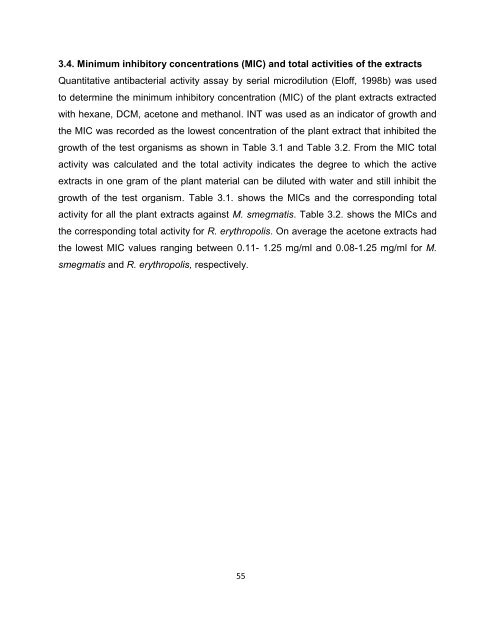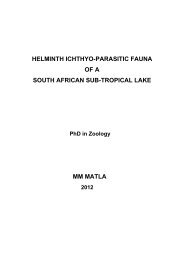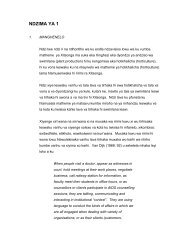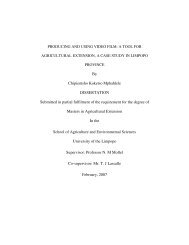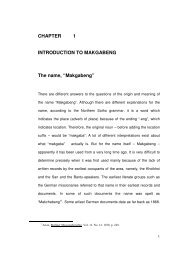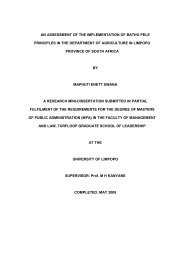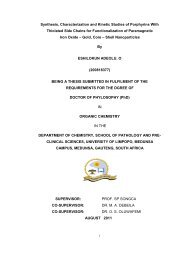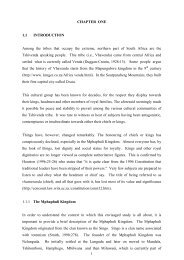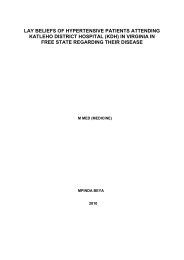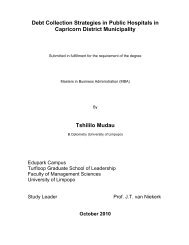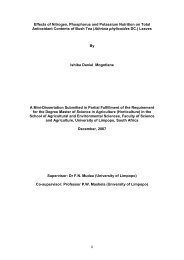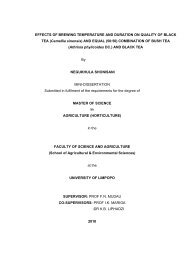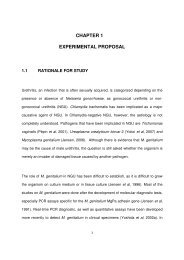Mmushi T MSc (Microbiology).pdf
Mmushi T MSc (Microbiology).pdf
Mmushi T MSc (Microbiology).pdf
You also want an ePaper? Increase the reach of your titles
YUMPU automatically turns print PDFs into web optimized ePapers that Google loves.
3.4. Minimum inhibitory concentrations (MIC) and total activities of the extracts<br />
Quantitative antibacterial activity assay by serial microdilution (Eloff, 1998b) was used<br />
to determine the minimum inhibitory concentration (MIC) of the plant extracts extracted<br />
with hexane, DCM, acetone and methanol. INT was used as an indicator of growth and<br />
the MIC was recorded as the lowest concentration of the plant extract that inhibited the<br />
growth of the test organisms as shown in Table 3.1 and Table 3.2. From the MIC total<br />
activity was calculated and the total activity indicates the degree to which the active<br />
extracts in one gram of the plant material can be diluted with water and still inhibit the<br />
growth of the test organism. Table 3.1. shows the MICs and the corresponding total<br />
activity for all the plant extracts against M. smegmatis. Table 3.2. shows the MICs and<br />
the corresponding total activity for R. erythropolis. On average the acetone extracts had<br />
the lowest MIC values ranging between 0.11- 1.25 mg/ml and 0.08-1.25 mg/ml for M.<br />
smegmatis and R. erythropolis, respectively.<br />
55


